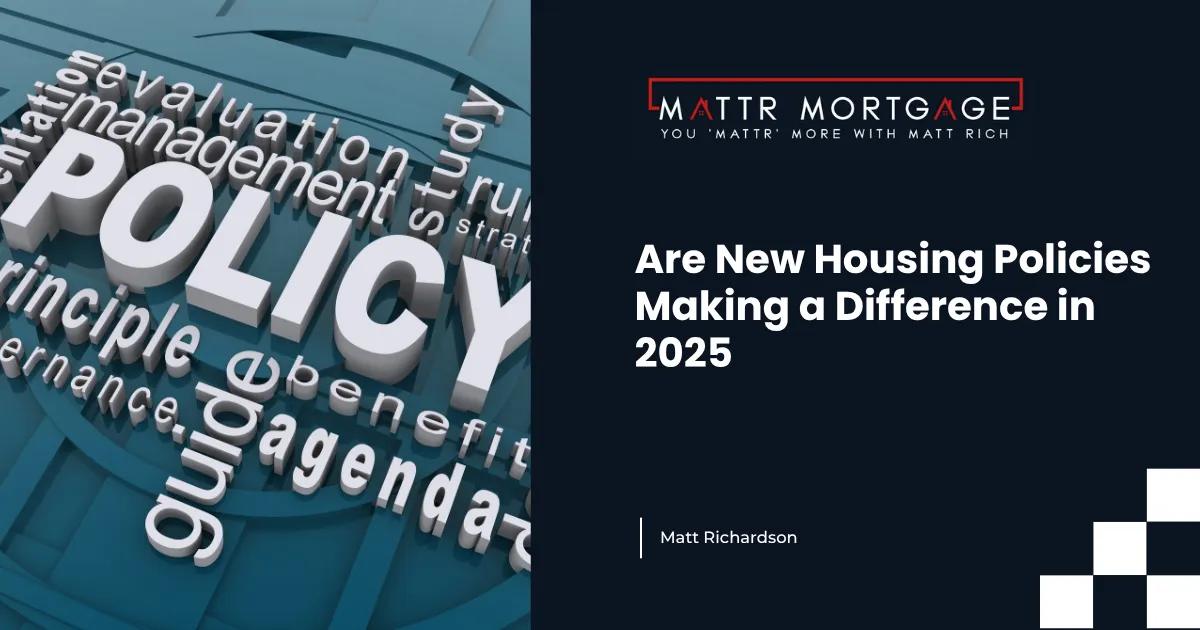
Are New Housing Policies Making a Difference in 2025
In 2025, housing affordability remains a top concern for millions of Americans—but are the new policies actually helping? From expanded down payment assistance to changes in zoning laws and updates to federal lending standards, there’s a lot happening behind the scenes. But if you’re wondering whether it’s actually moving the needle for everyday buyers, here’s what you need to know.
1. Federal Efforts to Increase Affordability
The federal government has launched several initiatives aimed at first-time and lower-income buyers in 2025. Key among them is the Downpayment Toward Equity Act, a proposed program that would offer up to $25,000 in down payment assistance to qualifying buyers. While it hasn’t been signed into law yet, it has gained traction and could be one of the biggest boosts for first-time homebuyers if passed this year.
At the same time, HUD and the Federal Housing Administration (FHA) are continuing to push for increased flexibility in underwriting guidelines. That includes wider acceptance of rent payment history and other non-traditional credit data to help more renters qualify for a home loan (Urban Institute).
2. Zoning Reforms Aiming to Unlock Inventory
One of the biggest challenges in today’s market isn’t just affordability—it’s availability. In response, both federal and local leaders are pushing zoning reforms to make it easier to build multifamily units and “missing middle” housing. The White House Housing Supply Action Plan has put pressure on local governments to change restrictive zoning that limits housing density.
In fact, dozens of municipalities across the U.S. have already relaxed single-family zoning rules to allow for duplexes, ADUs (accessory dwelling units), and small-scale multi-unit buildings. These efforts are still early, but they represent a long-overdue shift in how cities think about housing supply (Brookings Institution).
3. Tax Incentives and Builder Subsidies
To stimulate new construction, the Low-Income Housing Tax Credit (LIHTC) has been expanded in many areas, offering incentives to developers who commit to building affordable housing. While these incentives are more likely to help renters in the short term, some builders are beginning to add “starter home” inventory at lower price points thanks to local subsidies.
Still, critics argue that supply chain costs, labor shortages, and land prices are slowing progress, even as more funding is made available. This is one area where policy alone can’t move the needle without private sector cooperation (Joint Center for Housing Studies at Harvard).
4. Fannie Mae and Freddie Mac Changes
Both Fannie Mae and Freddie Mac have updated their policies to help close the affordability gap. These changes include:
Raising income limits for HomeReady and Home Possible programs
Allowing co-borrowers who don’t live in the home to help qualify
Greater flexibility for self-employed borrowers
These updates may not sound headline-worthy, but they’re quietly helping thousands of buyers qualify who wouldn’t have met the old standards just a few years ago (Fannie Mae and Freddie Mac).
5. The Bottom Line: Are Policies Making a Real Impact?
The answer is… kind of.
While some of the changes are promising and beginning to show results, especially in how loans are approved and how zoning is handled, the housing crisis in America is deep-rooted. Affordability is still stretched, inventory remains tight, and interest rates—despite some easing—continue to be a barrier.
However, if you’re planning to buy in 2025, these policies could give you a strategic edge. Whether it’s qualifying for a first-time buyer program, tapping into a lower-down-payment option, or keeping an eye on zoning changes in growing areas, staying informed is key.
The real opportunity comes when you combine smart timing with the right strategy. And that’s where working with a mortgage professional who understands both the old rules and the new updates can make all the difference.



